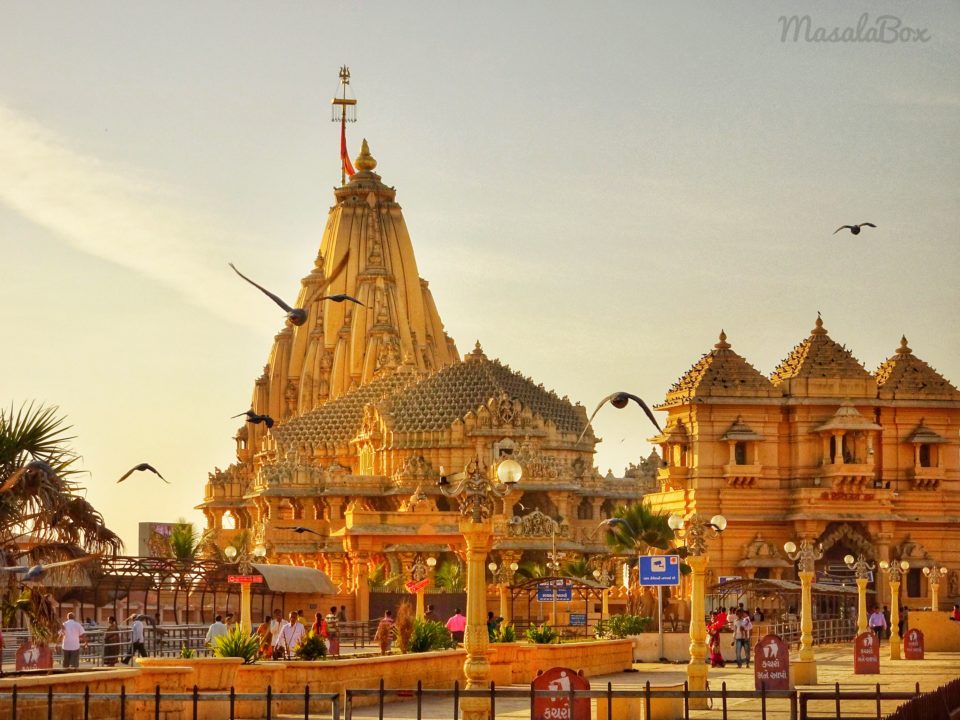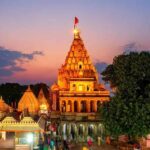Travelling has always been my passion throughout my life, and as we all know, our world is full of exquisite and fascinating places. Being a history enthusiast and having a deep love for our beloved Hindu culture, I chose the Somnath Mahadeva Temple as my one-stop destination. This temple, despite being looted multiple times, stands as a remarkable example of strong historical significance and culture
Somnath, which translates to ‘The Shiva’ or ‘Lord of the Moon,’ is a truly unique religious site in India known for its cleanliness and serenity. The temple’s captivating architectural style and intricate carvings will leave you in awe from your very first glimpse.
This enormous temple is situated on vast grounds and attracts millions of tourists annually. Beyond its spiritual significance, the temple boasts fascinating facts that effortlessly captivate its visitors.
Among the most popular Hindu shrines, Somnath is believed to be the site of the first naturally formed jyotirlinga in India. There are 11 other highly revered jyotirlingas across the country, including Kedarnath, Bhimashankar, Mahakaleshwar, Omkareshwar, Trimbakeshwar, Rameshwaram, Shrisailam, Vishwnath, Vaidynath, Nageshwara, and Grishneswar.
This shrine is a haven for devotees of Lord Shiva, fostering deep devotion and inner peace. The supreme deity is worshipped in the form of a lingam here, with an intriguing story surrounding its establishment.
THE ORIGIN OF THE TEMPLE – A CELESTIAL STORY
Legend has it that the original construction of the temple was attributed to Lord Moon, the God of Romance. He was married to 27 daughters of Daksh Prajapati but had a special love for his youngest wife, Rohini.
The other queens, feeling neglected by their husband, sought counsel from their father, Daksh. Despite several discussions and efforts to change Moon’s behaviour, Daksh grew increasingly worried and agitated. As a result, Moon was cursed by his father-in-law, causing him to lose his radiance and lustre.
In a bid to regain his former glory, Moon turned to worship Lord Shiva and undertook a sacred bath in the pure waters of the Saraswati river. Impressed by Moon’s unwavering devotion, Lord Shiva partially lifted the curse, allowing the various phases of the moon to be seen after lunar eclipses. In gratitude, Moon constructed a magnificent Shiva temple, crafted entirely from gold.
HISTORY OF THE SOMNATH TEMPLE

Undoubtedly, this temple boasts a remarkable history that is worth listening to, primarily due to its immense wealth. Over the years, it suffered multiple lootings and destruction at the hands of various Muslim leaders, including Alauddin Khalji, Aurangzeb, and Zafar Khan, among others.
Being considered one of the wealthiest temples, it also fell victim to the Portuguese in 1546. However, after each demolition, the Somnath temple was painstakingly reconstructed. The credit for its eventual reconstruction in 1950 goes to India’s eminent leader, Sardar Vallabhbhai Patel.
According to local tales, the Somnath temple has a fascinating history. It was originally constructed in gold by Lord Moon, then in silver by Lankapati Ravana, and later in wood by Lord Krishna. The stone-built version came into existence many years later, credited to Bhimdev.
Other things to enjoy
Unique Light and Sound Show
One of the temple’s distinctive features is its captivating light and sound show, which provides an immersive journey through the history of the grand Somnath temple. This show is narrated by legendary Bollywood actor Amitabh Bachchan and Paresh Rawal and offers a 3D version for a unique experience.
The temple boasts a spacious amphitheatre where visitors can sit at the heart of the temple and enjoy the refreshing sea breeze. The show, complemented by the natural sound of ocean waves, leaves a lasting impact on viewers. Tickets are available inside the temple after the evening aarti, and the show typically begins around 8 pm.
Beautiful Seashore of Somnath Beach
The temple is situated alongside a stunning beach, aptly named Somnath Beach. Access to the beach from the temple is blocked by large rocks, but witnessing the sunset in this mystical setting is truly breathtaking. Inside the temple premises, binoculars are available to spot small Shiva lingams emerging from the ocean.
Mesmerising Festivals
While the Somnath temple is always a place of beauty and serenity, its charm is elevated during festivals such as Mahashivratri, Navratri, and Kartik Purnima. During these times, countless devotees come together in fervent devotion and enjoy the four-day fair that coincides with Kartik Purnima.
Furthermore, you can explore the nearby attractions like Gir National Park and the beautiful islands of Diu, enhancing the overall allure of your itinerary.
Some special tips
Wear Proper Clothes: To show respect for the sanctity of the temple, it’s advisable to wear traditional and modest clothing when visiting.
No Photography: Keep in mind that photography is strictly prohibited within the temple premises. Please respect this rule during your visit.
Pooja Samagri: Do not bring pooja samagri, including items like dhoop and batti, into the temple, as they may not be allowed inside
When to visit?
Gujarat is anyways a hot state and summers are extremely hot to experience. So, our recommendation would be to travel somewhere between September to February.
The temple is open for its visitors from 6 in the morning to 8 in the night. Those who want to enjoy the darshan aarti, can visit the Somnath temple for the morning Aarti that takes place at 7 am and 12 pm and evening Aarti’s time is 7 pm.
Accomodation?
There are multiple options for hotels that are established near the temple. You can book them in advance according to your budget and preferences
How to reach?
To reach the Somnath Jyotirlinga Temple, you can follow these general directions:
By Air: The nearest airport is Diu Airport (approx. 90 kilometres away) or Rajkot Airport (approx. 200 kilometres away). After reaching either of these airports, you can hire a taxi or take a bus to Somnath.
By Train: The nearest railway station to Somnath is Veraval Railway Station, which is well-connected to major cities in Gujarat and other parts of India. From Veraval, you can take a taxi or auto-rickshaw to reach the temple.
By Road: You can also reach Somnath by road. It is well-connected by state highways and national highways. You can drive or take a bus to Somnath from various cities in Gujarat or neighbouring states.
Remember to check the current status before planning any trip
Final thoughts
The Somnath Mahadev Temple is renowned as one of the cleanest and best-managed temples in our country. Its beauty and the sense of devotion you experience when visiting the temple are truly indescribable. The tranquillity and serenity of the temple enhance its inner aura, making it a magnificent masterpiece that should be at the top of your list.











